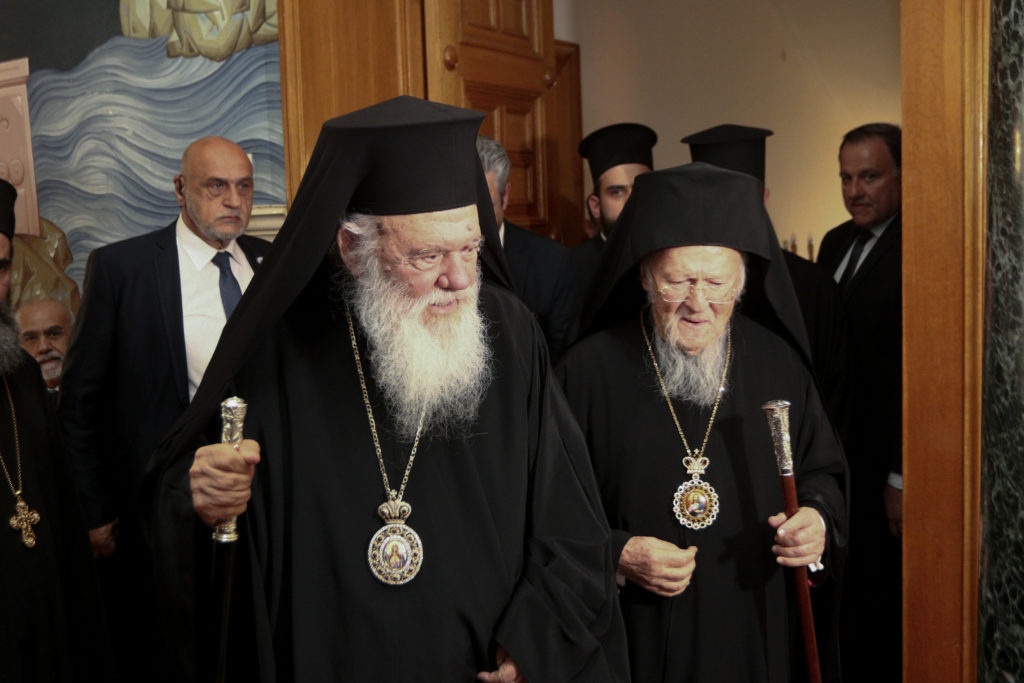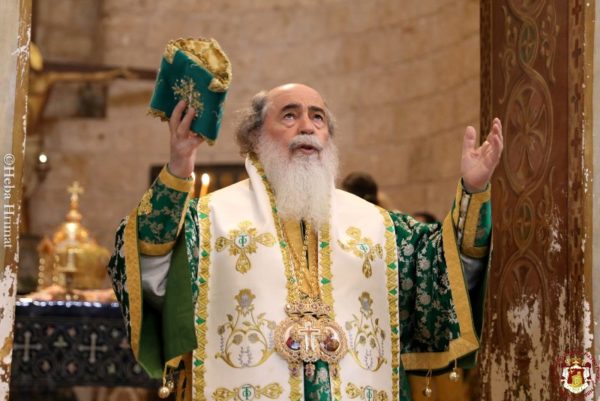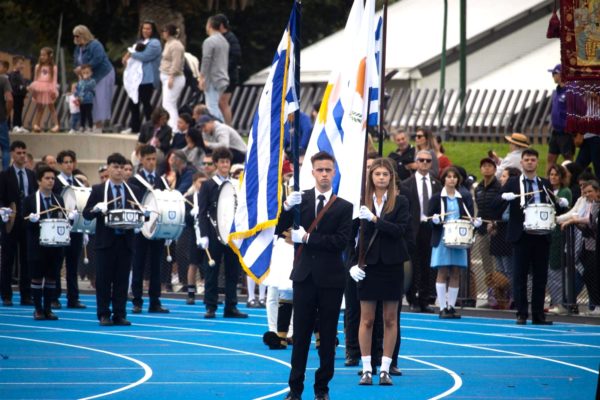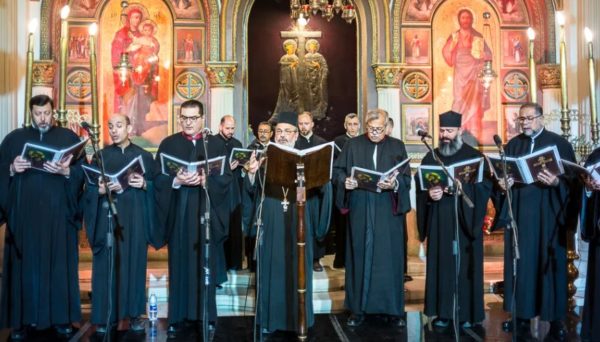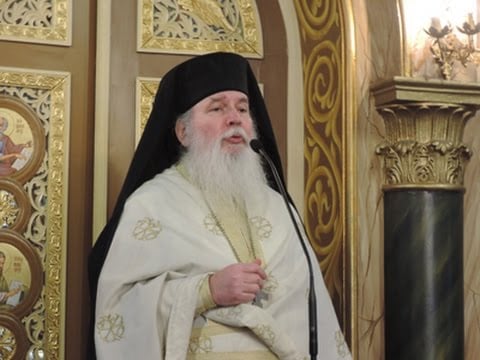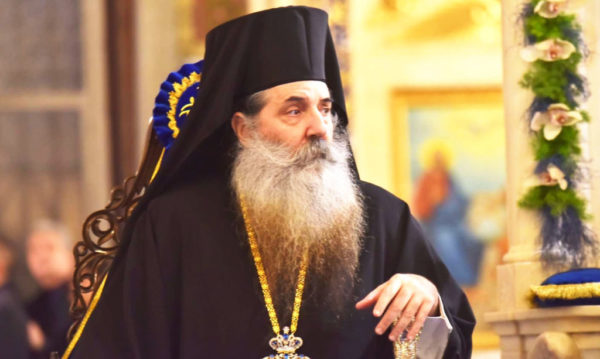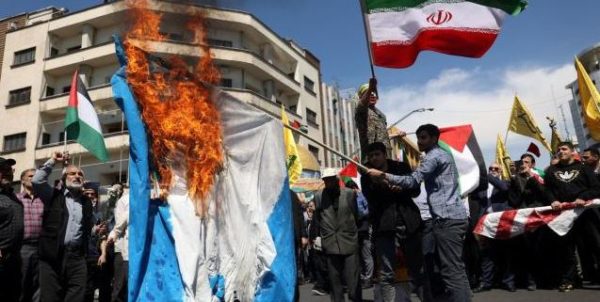Priest sets store in painting and praying
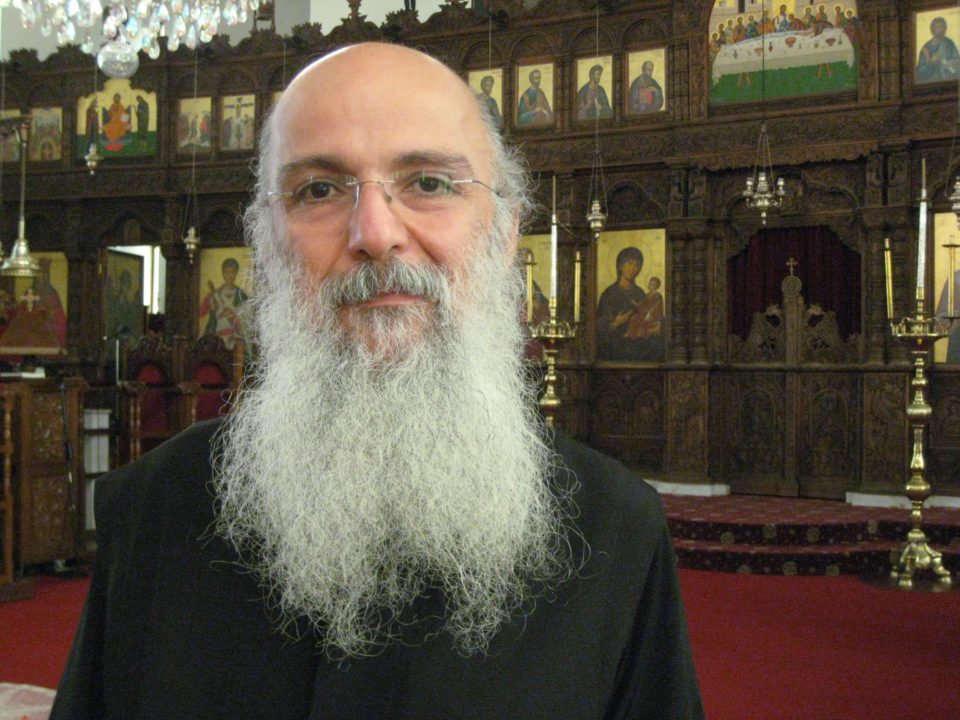
A man who was always close to God became a priest after nine years working in a bank. He has now found a new creative path with an upcoming exhibition, finding peace in both the Church and art. THEO PANAYIDES meets him
The second-most unusual thing about Father Ioannis Kyprianou is perhaps that he’s a Greek Orthodox priest – rector of the St Nicholas Church in Engomi – who has an art exhibition opening in two weeks (At the Doorstep of a New Creative Path, presented at the Breast Centre of Cyprus in Nicosia). But the most unusual thing about Father Ioannis is perhaps his personal energy – an agile, downright light-hearted energy, belied by his bushy white beard, a genial joy that skips and skitters in the air between us as he tells me of his life, sitting in the small reception hall behind the church.
I suppose we shouldn’t generalise – yet there is a certain style that comes to mind when you think of a priest, especially an Orthodox priest with their cassock and forbidding appearance. Quite portentous, certainly. Maybe a bit self-important. Even if they turned to the priesthood at a later stage – Father Ioannis became a clergyman at 29, after nine years at the Bank of Cyprus – you’d expect some heaviness attached to that, maybe a stirring tale of a road-to-Damascus conversion. None of that applies in this case, indeed it doesn’t sound like 18 years of being a priest (he’s now 47, though the beard makes him look older) have even changed him all that much.
“I was always very, very spontaneous,” he tells me cheerfully. “That’s why I have this energy inside me – though now I am more careful,” adds Father Ioannis, admitting to a certain gravitas that comes with the job, “especially with my decisions… But, at the same time, I would say I haven’t changed. Sometimes I feel I’m a teenager! I will tell my jokes with my wife, my friends, my daughters. I will sing with my daughters, I will play the piano and sing with them.”
What does he miss, from his life as a layman?
“Dancing!” he replies at once. “I loved to dance, I was a dancer.” A dancing priest might be frowned-upon in our rather uptight culture (it’s different in Greece, where the priest is often called on to start the dancing at weddings), so instead he dances at home with his daughters – he has three, aged 18, 17 and five – though he’ll often sit at a wedding and surreptitiously tap his feet under the cassock. He was actually in a dance group in his youth (traditional dancing, of course), as well as being something of a class clown – “the impersonator of the teachers,” as he puts it – and painting, and writing sketches, and playing the piano. Father Ioannis chuckles: “You understand why I wanted desperately to go to art school.”
He almost did; many would say he should’ve done. His dad, he explains, was a policeman and “a strict father”; his mother had her own business, a clothing factory with 20 employees that kept her busy 14 hours a day. They were refugees from Kato Zodia, focused on working hard and raising their three kids (Ioannis is the youngest); airy-fairy things like art and music weren’t really on their radar. “I was always artistic,” he recalls. “I was born with that gift from God… But sadly, my parents didn’t appreciate my talent that much.” At 19, he passed the entrance exams for the Bank of Cyprus; at the same time, however, he won a Fulbright scholarship (having applied without telling his parents) to an art school in Ohio. His secret came out and “a big conflict” ensued, he explains in fluent but non-native English. His parents did what all parents do, told him to be reasonable, pointed out the merits of a safe job at the bank versus the precariousness of life as an artist: “You’ll be painting portraits in Ayia Napa”. He gave in, and spent his 20s cashing cheques and filling out paperwork.
The job itself wasn’t too bad, especially after being placed in a department that subbed for colleagues on holiday, moving around all over Cyprus. He was always “a very open guy, a very socialised guy,” says Father Ioannis, and enjoyed the excitement of meeting people – but equally “I could never imagine myself working at the bank for a lifetime”. His parents also pressured him to study banking, to improve his prospects, but that was a step too far; after about three months, he walked out of the lesson – never to return – and “went down to Rainbow [the art shop in Nicosia] to buy painting stuff”.
All well and good – yet here we are, nearly halfway through this profile, and still no mention of God, or becoming a priest. “It’s a call,” he says vaguely. “You can’t explain it.” True enough, but his own call took a while to arrive – though he was always close to God, having been raised by devout grandparents (his parents worked long hours, as already mentioned), and also took up icon painting during that decade in limbo, melding religion and art in his mind. “I’ve painted many icons. For example, at the Church of the Transfiguration in Anthoupolis, all the icons there are mine.” There appears to have been a slow, steady drift to the cloth, without any road-to-Damascus moment. He studied Theology at Thessaloniki while still at the bank, going off to Greece – using his annual leave – to sit the exams. He met his wife (they got married in 2000), who was also devout and supported him on his new path. He approached the Church, with help from his ‘spiritual father’, and became a deacon. Finally, he resigned from the bank, choosing to become a married priest – as opposed to a celibate monk – even though it means he can never advance beyond his current rank. I don’t mind, he assures me; “I’m very, very satisfied where I am”.
Is he, though? After all, he also stopped painting, even icons (there was no time), only taking it up again a couple of years ago. Even this month’s exhibition wasn’t really his idea; he began posting photos of his paintings on Facebook, and people urged him to exhibit them (he was hesitant, he says, wary of the vanity in glorifying his own works as opposed to God’s). Does he really not wonder about what might’ve been? Did he really feel a call to the priesthood – or was the whole thing just a compromise choice, a job he enjoyed which his parents would find unobjectionable? It seems a rather mild, tepid reason to go into something as momentous as spiritual service.
The answer, I suspect (or part of the answer), comes when I ask how he actually senses God; how, if at all, do we pin down His presence? There are miracles, for sure, he replies almost casually – metaphorical miracles like “a man switching from a bad life to a good life”, and even the occasional literal miracle; he’s seen people have metaphysical “experiences” – but even beyond the miracles there’s a more fundamental answer. “I feel God’s presence through the peace that He gives me”.
It’s important, that sense of peace; people are so stressed nowadays, so “overwhelmed” as he puts it. A priest is a kind of psychologist, especially in the Orthodox church where confession is said face-to-face, without the privacy of a screen; Ioannis’ spiritual children come to him with all sorts of problems – someone even confessed to a murder once! – and of course he can never appear judgmental, always has to “show the love of Christ”, but I’m struck by the fact that he singles out “obsessions” as a common problem. What he means by that is a little vague (the example he gives is of someone saying “Father, I’m obsessed that if I don’t say my prayers I will go to Hell”, though apparently it extends to secular issues as well) – but it makes perfect sense that Father Ioannis should cite inner peace as a proof of God, and obsession as a proof of modern ills. Despite his lively style and artistic temperament, he has none of the artist’s extremism; instead he comes off as a playful, benevolent person, moderate in all things – not a fire-and-brimstone preacher, but a believer in religion as a kind of healing.
His God isn’t the fierce Catholic God, “not a punisher God, He’s a God of love, that forgives”. I throw all the various systemic problems at him, but he’s unfazed. Isn’t the Church increasingly out of touch with social values, in its disdain for the environment for instance? “Maybe in Cyprus, yeah, I agree,” he replies mildly, adding however that “we shouldn’t put all the priests in one basket”.
Isn’t religion increasingly irrelevant in our age of technology? Not at all, he replies, pointing out that many young people – he meets them often, when they come to St Nicholas – have become disenchanted with this deification of technology that leads nowhere, only to slavery (“because you see, all our children now are slaves of that mobile all the time”). “If you go to Mount Athos, you will see that the monasteries are full of monks who are scientists! My best friend finished Cambridge, finished his PhD at Imperial – Statistics and Mathematics – and the next day he went to Mount Athos and became a monk”. Father Ioannis is placid, relaxed. Even the fact that his church is now alarmed, after a burglary and two attempted break-ins, doesn’t seem to rattle him. Even as a parent he claims to be laid-back, never pushing his kids as his parents pushed him.
And of course his painting is also therapeutic, indeed that’s why he came back to it three years ago, because he was feeling tired at work (not through stress, he says, just hard work, what he calls toil: “Toil is blessed; stress is not blessed”). He paints at night, when the family are in bed, sometimes till one in the morning, and he’ll often paint and pray at the same time: “The Jesus prayer. ‘Lord Jesus Christ have mercy on me, a sinner’. So relaxing – and at the same time, you know, you paint. When you enjoy the works of God and at the same time you pray, it’s so beautiful”. His paintings do indeed celebrate ‘the works of God’, being in a photo-realist style known as naturalism (he’s very influenced by the 19th-century painter Jules Bastien-Lepage). He usually works from a photo – “but I change things”, making the light more effulgent in his depiction of a Mount Athos monastery, or adding an entire background of war and explosions to a painting of a crying child.
One might call Father Ioannis a Sunday painter – except of course that he’s precisely the opposite, Sunday being the one day when he’s far too busy to paint. His duties, generally speaking, don’t sound too onerous; St. Nicholas is a big church with three priests dividing the labour – and he’s mostly in charge of schools, both the church’s own school and visits to local state schools, giving talks and so forth. More intriguingly, “because of my relatively good English” (a rarity among priests in Cyprus), “the Archbishopric appointed me to be in charge of all the English-speaking converts” – whether Buddhists, Muslims (mostly from Syria) or non-Orthodox Christians, whether converting because they plan to marry a local or simply because they’re drawn to our slightly gentler strain of Christianity. Sounds like it could be a growth industry, with the recent spike in migrants and asylum seekers – and Father Ioannis seems aware of this too, pausing once or twice to ask me about his English. It could certainly help his career, as a married priest – at least if he weren’t already “very, very satisfied”, which he is.
Could he have been a professional painter? Would he have wanted to? “God is not responsible for our choices,” he laughs when I ask why the Almighty allowed his God-given talent to fall by the wayside – and besides it might be better this way, his light, creative energy channelled into trying to make the world a bit more unstressed and unruffled. “Nothing is accidental in this world,” says Father Ioannis, suggesting that the grand plan is there if you look hard enough. It’s been fun, just a bit unorthodox.
At the doorstep of a new creative path
Solo painting exhibition by Father Ioannis Kyprianou. October 20-November 4. Breast Centre of Cyprus, Makrasykas 3, Strovolos, Nicosia. 8am-7.30pm
- Source: cyprus-mail.com
H αναδημοσίευση του παραπάνω άρθρου ή μέρους του επιτρέπεται μόνο αν αναφέρεται ως πηγή το ORTHODOXIANEWSAGENCY.GR με ενεργό σύνδεσμο στην εν λόγω καταχώρηση.
Ακολούθησε το ORTHODOXIANEWSAGENCY.gr στο Google News και μάθε πρώτος όλες τις ειδήσεις.









